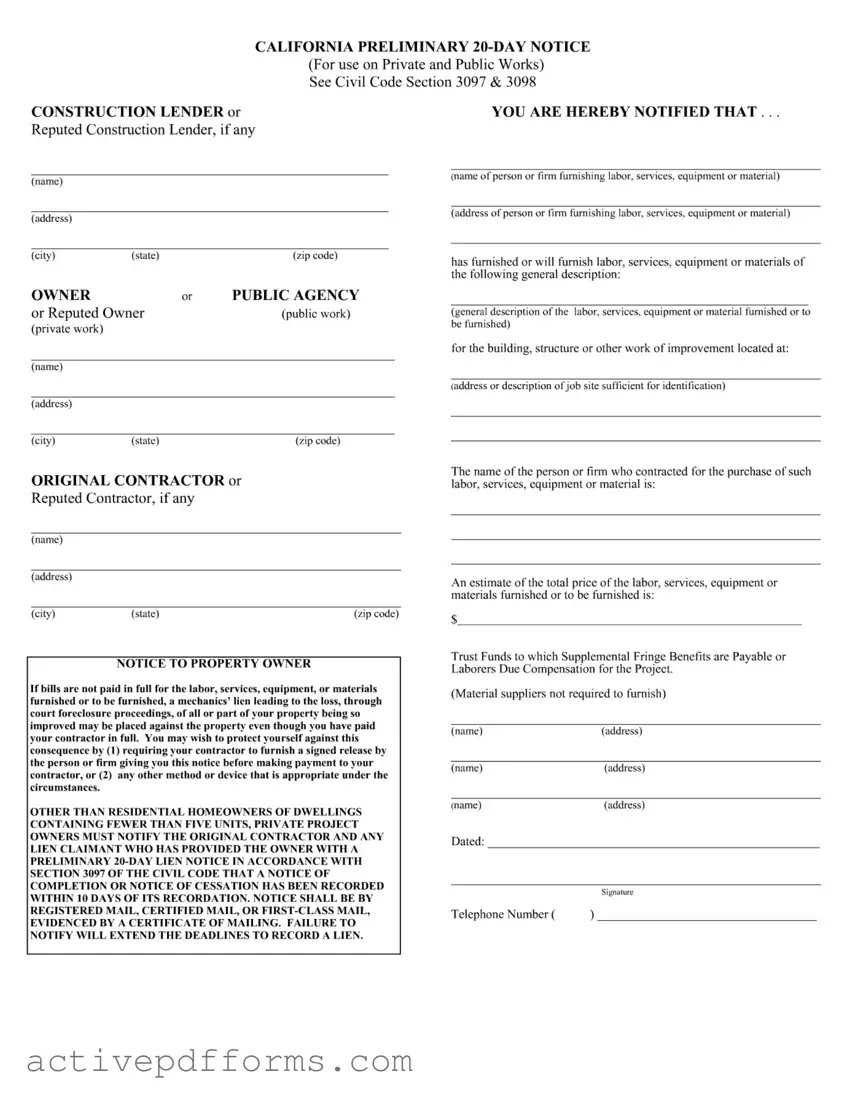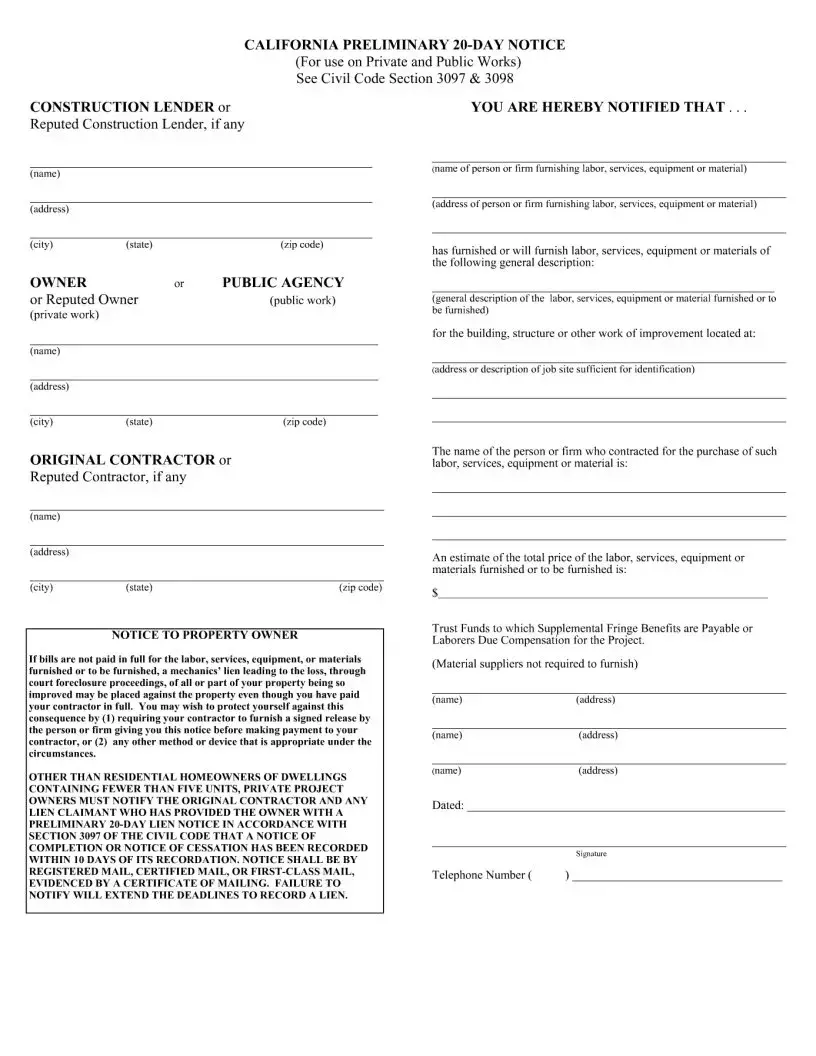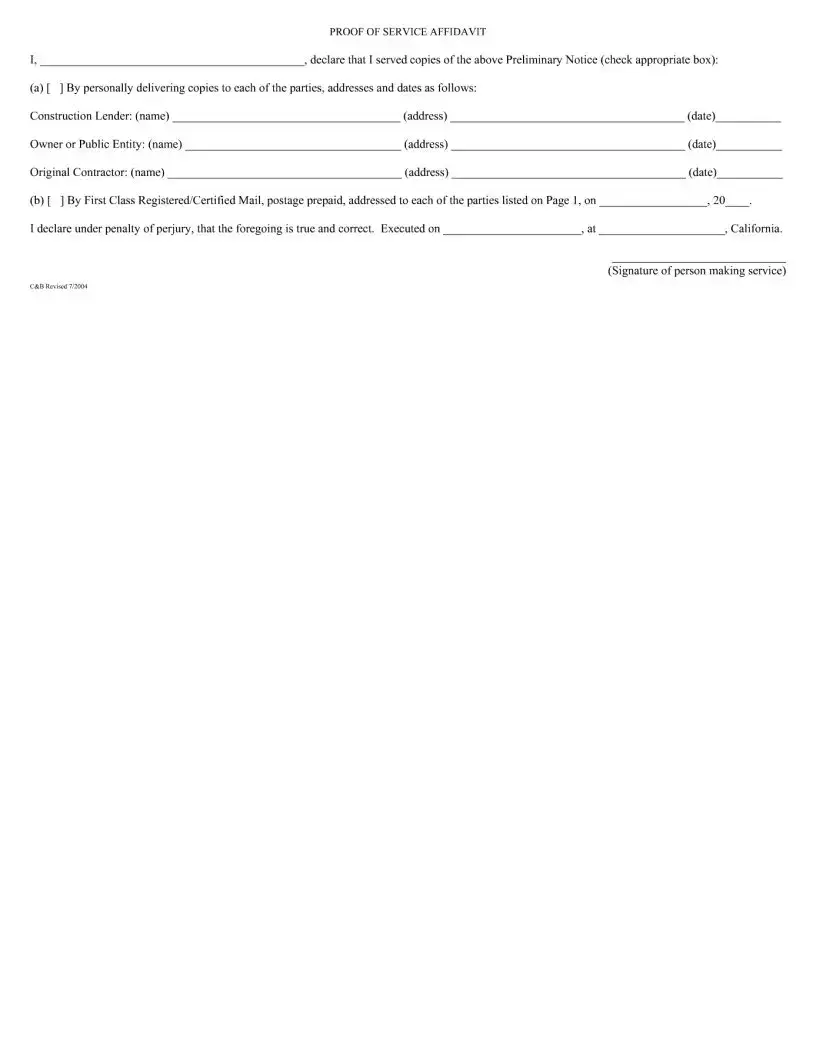Free California Preliminary 20 Day Notice PDF Template
The California Preliminary 20 Day Notice form is a crucial legal document used in the construction industry for both private and public works, as outlined in Civil Code Sections 3097 & 3098. It serves as a notification from contractors, subcontractors, or material suppliers to property owners, construction lenders, and general contractors about their right to file a mechanics' lien if payment for furnished or to be furnished labor, services, equipment, or materials remains unpaid. This notice plays an essential role in protecting the rights of those providing services or materials and informs property owners of potential risks to their property if bills go unpaid.
Edit California Preliminary 20 Day Notice Now


